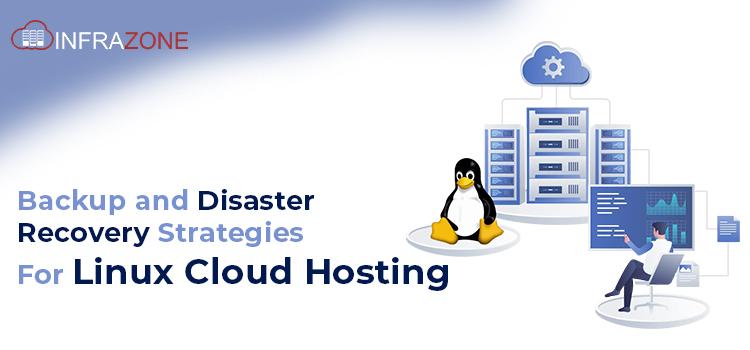
In the realm of Linux cloud hosting, mastering the art of backup and disaster recovery is key to preserving your valuable data and ensuring seamless business continuity. This blog will take a fresh approach to exploring effective backup and disaster recovery strategies uniquely tailored for Linux cloud hosting environments. By implementing these best practices, you can fortify your data protection, minimize downtime, and emerge unscathed from any potential disasters.
Unleashing the Power of Linux Cloud Hosting: Best Practices for Backup and Disaster Recovery
The 3-2-1 Backup Rule:
Keep three copies: Maintain three copies of your data—one primary and two backups—to guard against data loss.
Use two different storage types: Employ diverse storage media, such as local servers and cloud-based solutions, to minimize risks associated with a single storage medium failure.
Store one copy offsite: Securely store one backup offsite to protect against physical damage, natural disasters, or localized incidents.
Granular Backup Strategies:
File-level backups: Perform regular backups at the file level to ensure the ability to recover individual files or folders.
Image-based backups: Capture entire system snapshots, including the operating system, applications, and configurations, enabling complete system restoration.
Automation and Scheduled Backup:
Set up automated backups: Configure scheduled backups to run automatically at specified intervals, reducing the chances of oversight or human error.
Define backup frequency: Determine the optimal backup frequency based on the rate of data changes and the criticality of your operations.
Testing and Verification:
Regularly test backups: Periodically simulate the restoration process to validate the integrity and reliability of your backups.
Verify data consistency: Conduct periodic data integrity checks to ensure the completeness and accuracy of your backup files.
Disaster Recovery Planning:
Establish recovery objectives: Define recovery time objectives (RTO) and recovery point objectives (RPO) to set realistic recovery goals and guide your disaster recovery planning.
Develop a comprehensive plan: Document step-by-step procedures for recovering your Linux cloud hosting environment, including network configurations, application installations, and data restoration.
Continuous Monitoring and Documentation:
Monitor backup processes: Regularly monitor backup logs and verify the success of backup operations to proactively address any issues or anomalies.
Document your backup and recovery procedures: Maintain up-to-date documentation outlining your backup and recovery strategies for quick reference during critical situations.
Understand Your Data:
Identify critical data: Determine which data is essential for your business operations and prioritize its backup and recovery.
Categorize data types: Classify your data based on importance, sensitivity, and regulatory compliance requirements.
Choose an Appropriate Backup Strategy:
Full backups: Take complete snapshots of your entire system, including operating system, applications, and data.
Incremental backups: Back up only the changes made since the last full or incremental backup, reducing storage requirements and backup time.
Differential backups: Capture changes made since the last full backup, simplifying the restore process.
Conclusion:
By adopting these innovative strategies for backup and disaster recovery in Linux cloud hosting, you can safeguard your data, uphold business continuity, and navigate unforeseen challenges with confidence. Remember to adhere to the 3-2-1 backup rule, implement granular backup strategies, automate scheduled backups, conduct regular testing, devise a robust disaster recovery plan, and maintain vigilant monitoring and documentation practices. Embrace the power of Linux cloud hosting, knowing that your data is secure and your business is well-prepared for any potential disruptions.
